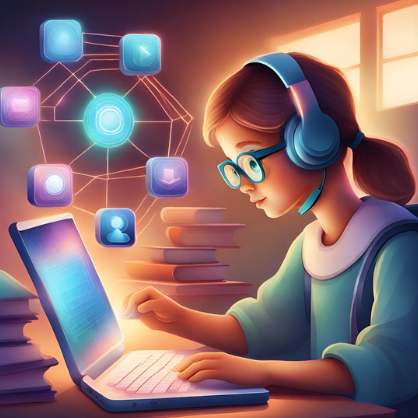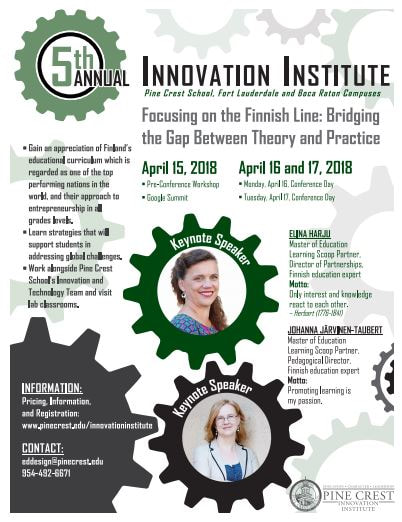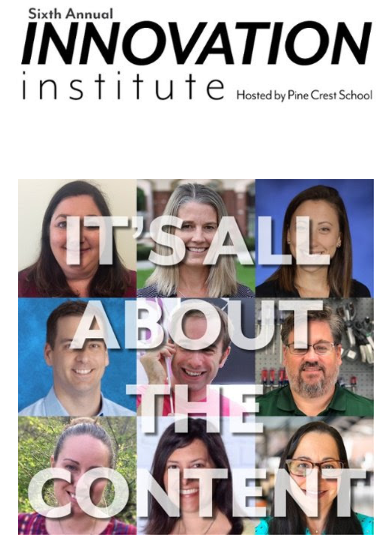Menu
|
What is Educational Technology?
Educational Technology is the practice and study of facilitating and enhancing the learning process through the use of technological resources. Source: https://www.igi-global.com/dictionary/educational-technology/9142 Personal connection: As an EdTech I will use any type of manipulative that will assist students in learning. I enjoy using technology as a learning tool at school for my students when it assists them in understanding concepts that other strategies have not helped in supporting their learning. How can Educational Technology help students? Educational Technology helps students because it reinvents our approaches to learning. Source: https://tech.ed.gov/netp/introduction/ Personal connection: As our student’s worldly views change its our responsibility as educators to change with them. Ex. A pencil is a piece of technology. At one point in our world history we did not have items to write with and inventions populate so does our human ability to create and learn new things. Does Educational Technology help students learn? Educational technology helps students learn because it provides students with vast amounts of information and resources. Source:https://explorance.com/blog/7-reasons-students-need-technology-classroom/#:~:text=Technology%20provides%20students%20with%20instant,be%20available%20in%20traditional%20textbooks. Personal connection: Often I think about a quote I saw about how powerful humans have become in our learning because if you really think about access to the world it is all in your hand. We can look up live information from about the world quickly on our phones even while flying on a plane. We rarely go without a way to find information. It’s a different world than research that occurred before 1995. Why is Educational Technology important? Educational Technology is important because it allows learners improve their mental and physical health by increasing their cognitive skills. Source: https://elearningindustry.com/how-important-is-technology-in-todays-education-industry Personal connection: When I’m teaching I like to show tools that allow students and teacher to ‘work smarter, not harder.’ There are tools that I don’t recommend because there are simply too many steps to use them and there are other offline activities to accomplish the task quicker. The trick is to figure out if a tool is worth your time quickly. What does Educational Technology involve? Educational Technology involves 5 domains: Design, development, utilization, management and evaluation. Educational technology involves the practice of professionals in the field rather putting together ideas and tools for others to use. Source: https://ocw.metu.edu.tr/pluginfile.php/3298/course/section/1169/seels_instructional_20technology_definition_domains_20of_20the_20fie.pdf Personal connection: When others say to me that I am, ‘good with technology,’ often I think about flexibility. To be a good EdTech you have to be able to work well with others. Listening to what students and adult concerns are with their usage is key in assisting those using new tools. When was Educational Technology introduced to the public? In order to answer when educational technology was introduced to the public one has to decide what counts as technology. For example, there are those who argue that a pencil was once a new type of technology and others who would say that it was when the radio was introduced to the classroom. Is it typewriters in business classes or the actual boom of the internet that counts? Everything from photocopiers to overhead projectors are up for debate. Source: https://edtechmagazine.com/k12/article/2022/01/evolution-technology-k-12-classrooms-1659-today-perfcon Personal connection: Teaching technology history is just as crucial as teaching computational thinking skills. Everything from demonstrating what the save icon means to asking students to think about how one technology builds upon the last invention gives students a depth in understanding how things work, why people invented them, and how popularity of tools shapes our usage. Can Educational Technology replace a Teacher? Educational Technology can’t replace a good teacher however it can supplement and act as an assistant for a properly trained educator on a tool. While it’s tempting for those looking for quick solutions to financial issues in education or lack of employee availability in education the solution of replace teachers with technology has been historically disproven in the 1800s when education faced similar shortages and school districts tried to use the Lancastrian method. Similar methods were tried using radio and television to teach without personalization. Source: https://www.washingtonpost.com/outlook/2021/03/24/its-tempting-replace-teachers-with-technology-it-would-be-mistake/ Personal connection: Every student is different and strategies that work in some school systems may not work in others. A well-trained professional and experienced educator can evaluate tools and eliminate what may or may not work for each individual student. How to become an Educational Technologist? Educational technology is a growing field. To become an educational technologist there are now bachelor degrees however most technologists start with either classroom experience or a background in information technology. Many educational technologists go on to receive master’s degrees in educational technology, media, organizational leadership, Design Thinking, or STEM. When starting, it’s more important to have strong communication, instructional design, and project management skills because you may be working with a variety of adults and children working at different levels and asking to learn different skills. Experience allows educational technologists to understand how to quickly solve issues for different technology emergencies. One of the best ways to make the jump from a classroom educator to an educational technologist is to be open to learning how to do new things or have a skill using a particular tool that your organization needs a trainer for. This can be accomplished by taking one online course at a time. Many online courses to learn tools in education are free and put together by other educators or companies as part of their sales strategy. Source: https://www.edtechrecruiting.com/ Personal connection: So many Educational Technologists, Makerspace Operators, STEM teachers, or those in the field that I’ve met tend to be a ‘jack of all trades.’ When I first started teaching I had a varied background that didn’t make sense to many people. I would get statements such as, “Why do you need a degree in that to teach?” However, once I entered the field of educational technology, suddenly all of the odd-jobs I had made a lot of sense as I was able to put together all of my loves: Education, art, technology, law, and design to be able to properly integrate technology into other curriculum areas.
0 Comments
|
AuthorDebra Jacoby, J.D. Archives
January 2024
|
Proudly powered by Weebly


















 RSS Feed
RSS Feed